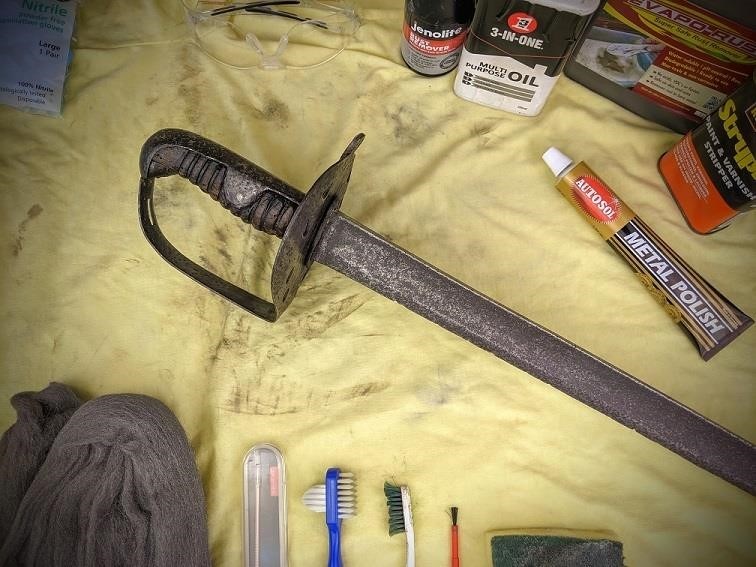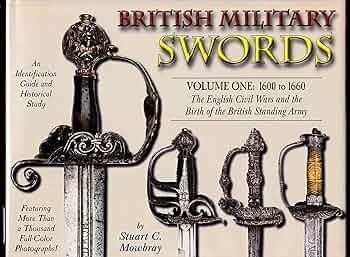Civil War Sword Identification⁚ A Comprehensive Guide
This guide provides a detailed approach to identifying Civil War swords. Learn to decipher maker’s marks, distinguish Union and Confederate pieces, analyze blade features, and assess condition and value. Utilize resources for further research and expert appraisals.
Understanding Sword Makers’ Marks
Identifying the maker of a Civil War sword often begins with examining the markings on the blade, particularly the ricasso—the unsharpened area near the hilt. These marks can be stamps, etchings, or other forms of impressed identification. Common marks include the manufacturer’s name or initials, sometimes abbreviated. However, remember that distributors often added their own marks, complicating identification. Some manufacturers, like Ames, are easily recognized due to their consistent markings. Others used less standardized methods. Variations in font style, size, and location of the mark are crucial details. The presence or absence of inspector’s marks, dates, or other identifying numbers adds to the analysis; Careful observation and comparison with known examples from reference books or online databases are essential for accurate identification of the sword’s origin.

Identifying Manufacturers⁚ Ames and Others
Ames Manufacturing Company is a prominent name in Civil War sword production, readily identifiable by specific markings often found on the ricasso. Their swords are well-documented, aiding in identification. However, numerous other manufacturers supplied swords to both Union and Confederate forces. Identifying these less-known makers requires more in-depth research. Consider the sword’s overall style, construction techniques, and any visible markings. Pay attention to the blade’s shape, the hilt’s design, and the scabbard’s features. These elements can narrow down the possibilities. Online resources, books specializing in Civil War arms and edged weapons, and historical society archives often contain catalogs and records that list manufacturers, patterns, and contract details. Cross-referencing information from multiple sources is crucial for accurate manufacturer identification beyond the readily recognizable Ames.
Common Markings and Their Significance
Civil War swords frequently bear markings that offer vital clues to their origin and history. These markings can include the manufacturer’s name or logo, often stamped on the ricasso (the unsharpened portion of the blade near the hilt). Inspect carefully for smaller markings as well; these might include dates, inspector’s marks, or even unit designations. The presence or absence of a particular marking can significantly impact a sword’s value and historical context. For instance, a clear Ames marking suggests a high level of production quality and a readily identifiable source. Conversely, the lack of clear markings might indicate a less reputable source or a later addition to the sword. Understanding the significance of these various marks requires careful study and comparison with known examples and catalogs. Detailed images and comparisons with documented examples from reputable online resources and historical archives are highly beneficial for accurate interpretation.
Dating Your Civil War Sword
Accurately dating a Civil War sword requires a multifaceted approach. While markings such as dates stamped on the blade or hilt provide direct evidence, their presence isn’t guaranteed. Consider the style of the blade, hilt, and scabbard. Changes in manufacturing techniques and design elements occurred throughout the war, offering clues to its approximate age. For example, the evolution of hilt designs, from simpler early-war patterns to more elaborate later-war styles, provides a chronological framework. The type of metal used in construction can also offer insights. Furthermore, comparing the sword’s characteristics to known examples from specific manufacturers and documented deliveries can further narrow down the dating window. Cross-referencing these visual and stylistic observations with historical records and databases of known Civil War swords can significantly aid the dating process, refining the timeframe to a specific year or range of years.
Distinguishing Union and Confederate Swords
Identifying a sword’s allegiance during the Civil War requires careful observation of several key features. While many Confederate swords were simpler in construction and often lacked elaborate markings, this wasn’t always the case. Union swords frequently displayed clear markings such as the manufacturer’s name, inspection stamps, and sometimes even the year of manufacture. These markings are often found on the ricasso (the unsharpened portion of the blade near the hilt). However, the absence of such markings does not automatically indicate Confederate origin. The style of the hilt and scabbard can also offer clues; Union swords frequently followed standardized patterns, while Confederate swords showed greater variability. The quality of materials and craftsmanship can sometimes provide a hint, with Union-made swords often exhibiting superior construction. However, exceptions exist, particularly with privately purchased or captured weapons; Ultimately, a combination of factors—markings, style, materials, and construction—must be considered for confident identification. Careful comparison to documented examples of both Union and Confederate swords is crucial for accurate assessment.
Analyzing Blade Features and Styles
A crucial aspect of Civil War sword identification involves a detailed examination of the blade itself. Note the blade’s length, width, and overall shape. Common styles include the straight cavalry saber, the curved infantry saber, and the more ornate officer’s swords. Pay close attention to the blade’s profile – is it flat, convex, or concave? Examine the fuller (a groove running along the blade’s length); its presence, location, and depth can be identifying characteristics. Look for any markings etched or stamped onto the blade, such as maker’s marks, inspection stamps, or even unit markings. The presence of a ricasso (the unsharpened area near the hilt) is important, as it often bears markings. Assess the blade’s condition⁚ look for signs of wear, damage, or repairs. The type of steel used and its resulting characteristics (such as hardness and flexibility) can sometimes be inferred from the blade’s appearance and condition. Consider the presence of any etched or engraved designs; these decorative elements can vary in style and complexity, offering clues to origin and date; By meticulously analyzing these blade features, you can significantly enhance your ability to identify and date a Civil War sword accurately.
The Importance of Scabbards in Identification
While the blade itself is central to identification, the scabbard plays a surprisingly significant role. Scabbards weren’t standardized; variations in material, construction, and fittings offer valuable clues. The material—leather, wood, or iron—immediately narrows down possibilities. Leather scabbards, common for enlisted men, often show wear patterns and variations in stitching that can be regionally specific or indicative of age; Wooden scabbards, sometimes covered in leather, may exhibit unique markings or construction techniques; Iron scabbards, more common for officer’s swords, frequently show distinct designs in their mounts and throat (the top portion). Examine the scabbard’s hardware—the mounts, throat, and drag (the bottom)—for maker’s marks or other identifying features. These often include stamped numbers or initials. The condition of the scabbard is also important; significant damage or repairs might suggest a longer history or specific usage. The presence or absence of a carrying strap or frog (a leather loop for attaching to a belt) can also provide helpful context; By carefully studying the scabbard’s material, construction, and hardware, you can significantly refine your identification process and gain a more complete understanding of the sword’s history and provenance.
Recognizing Variations in Hilt Design
The hilt, the handle of the sword, offers a wealth of identifying characteristics. Variations in hilt design can pinpoint the sword’s manufacturer, era, and even the rank of the soldier who wielded it. Pay close attention to the grip material—wood, bone, or metal—as this often varied based on cost and availability. The shape and size of the grip itself are important; some hilts are simple and functional, while others are more ornate. The guard, the metal piece protecting the hand, can be remarkably diverse. Note the guard’s shape (bowed, basket, or shell), its size, and the presence of any decorative elements. The pommel, the end of the hilt, can also provide identifying details. Different manufacturers employed unique pommel styles, from simple ball shapes to more complex designs. The method of attaching the guard and pommel to the grip is also significant; look for riveting, screwing, or other fastening techniques. The presence of wire wrapping on the grip is another key detail, especially for cavalry sabers. The number of wraps and their arrangement can be manufacturer-specific. Consider any additional features like decorative inlays, etchings, or engravings on the hilt. These details, often subtle, can be crucial for accurate identification, revealing much about the sword’s origin and use.

Assessing Condition and Value
Determining the condition of a Civil War sword is crucial for establishing its value. Begin by examining the blade for any signs of damage, such as pitting, rust, bends, or breaks. Assess the sharpness of the edge, noting any significant wear or damage. Examine the hilt carefully; check for loose parts, cracks in the grip material, or damage to the guard and pommel. The scabbard, if present, should also be inspected for dents, cracks, or rust. The presence of original components significantly impacts value; replacements often lower it. Note any markings or inscriptions on the blade or hilt, as these can significantly enhance the value. Consider the overall completeness of the sword; the presence of all original parts increases its worth. Authenticity is paramount. Beware of reproductions or modern-made swords falsely presented as originals. Research similar swords sold at auction or through reputable dealers to establish a price range. Factors like maker, model, condition, and completeness influence value considerably. While some swords may only be worth a few hundred dollars, rare or exceptionally well-preserved pieces can command thousands. For a definitive valuation, consider consulting a qualified appraiser specializing in antique weaponry.
Resources for Further Research
Several resources can aid in your Civil War sword identification journey. Online forums dedicated to antique weapons and military history, such as Reddit’s r/SWORDS, often feature knowledgeable enthusiasts who can offer assistance. Websites specializing in Civil War artifacts and memorabilia frequently contain detailed information on swords, makers’ marks, and variations. Books focusing on Civil War weaponry provide in-depth analysis of different sword types, manufacturers, and markings. Museums with extensive Civil War collections, both online and physical, offer valuable exhibits and educational materials. These institutions often have online databases or catalogs that can help you identify specific features of your sword. Consider contacting experts in the field, such as arms and armor specialists or military historians. Many are willing to provide consultations or appraisals for a fee. Specialized auction houses that handle military artifacts can provide insights into pricing and market trends. Remember that reputable sources are key; always cross-reference information from multiple sources before drawing conclusions. By combining online research with consultation from experts and museums, you’ll enhance your understanding of your Civil War sword’s history and significance.


